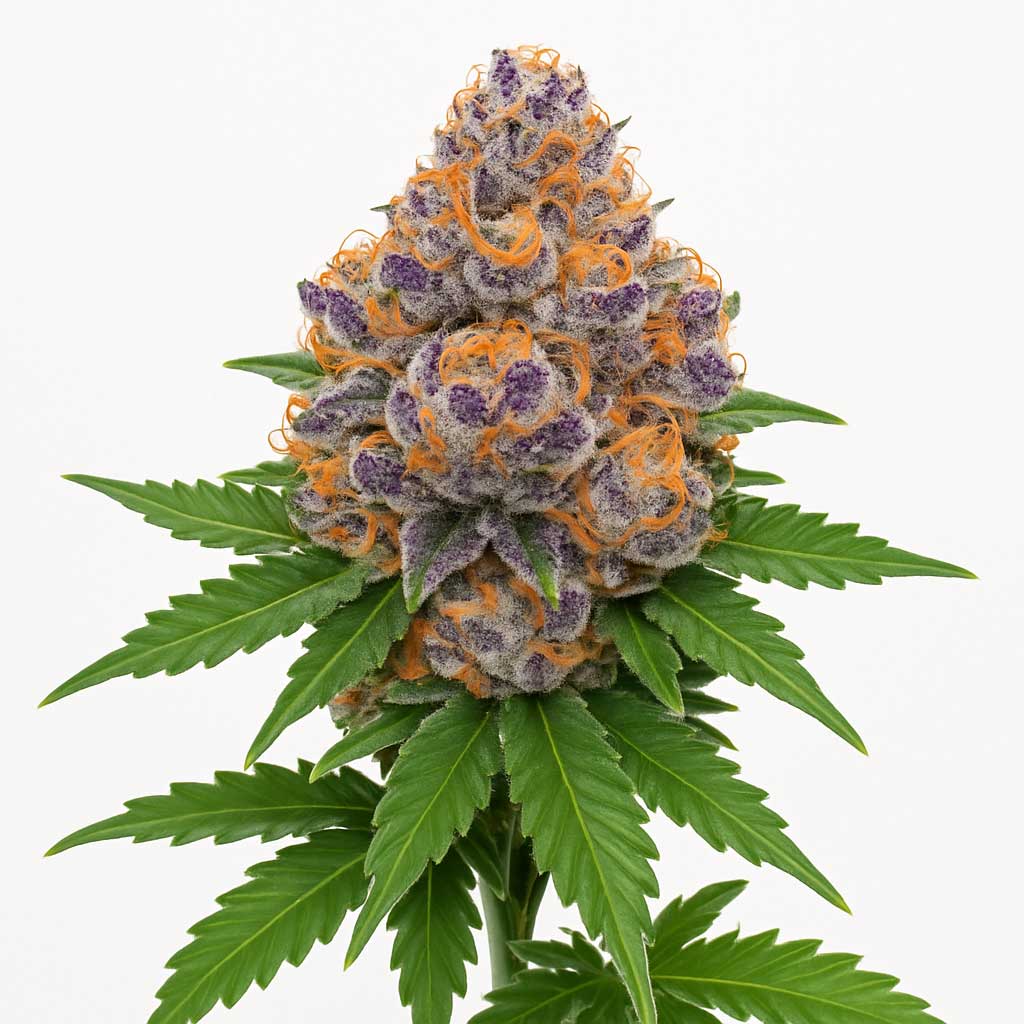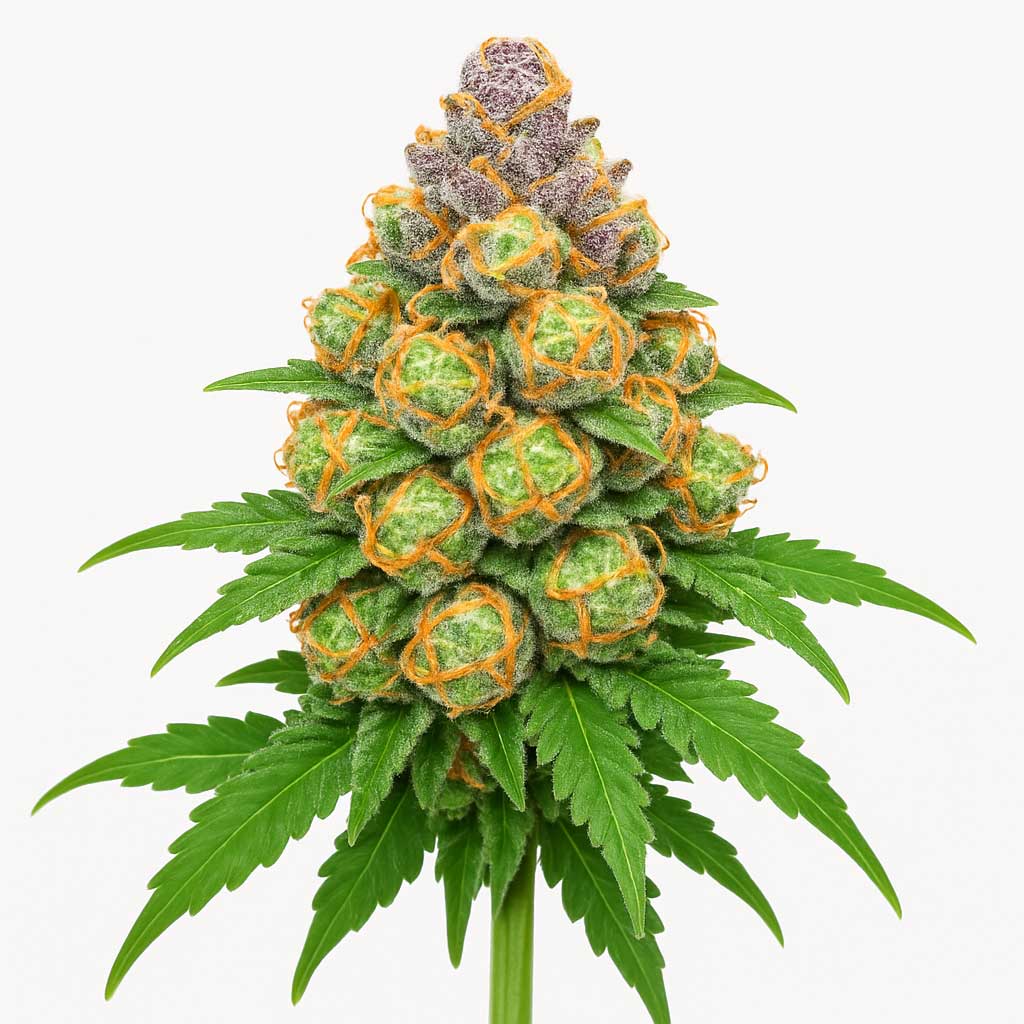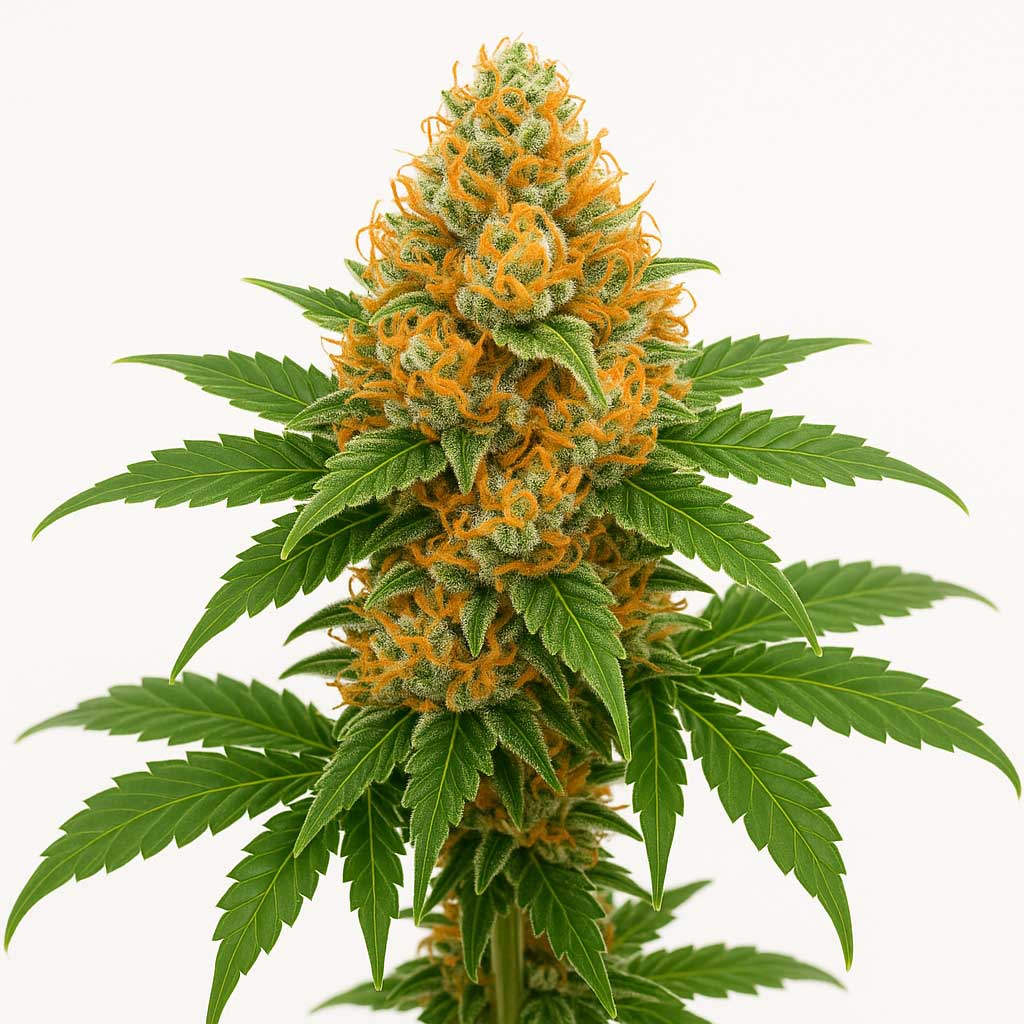DNA Cake (Cannabis Strain) — Strainpedia
DNA Cake is a relaxing Indica-Dominant Hybrid cultivar derived from a cross between Lava Cake x Wedding Cake. Recognized for its dense, trichome-heavy structure and a creamy, complex aroma that blends sweet dough with earthy fuel notes, it is frequently referenced in horticultural education for its potent body effects and high resin yield. The information below is intended strictly for scientific and botanical reference.
Quick Facts
| Genetics | Lava Cake x Wedding Cake |
|---|---|
| Variety | Indica-Dominant Hybrid (approx. 70% Indica / 30% Sativa) |
| Flowering Time | 9–10 weeks (63–70 days indoors) |
| Yield Potential | 450–600 g/m² (Moderate to High) |
| Plant Height | 90–120 cm; moderate, manageable stretch; bushy structure |
| Climate Preference | Indoor Control (Stable environment crucial for terpene preservation) |
| Difficulty | Intermediate (Requires effective pruning and airflow management) |
Scientific & Botanical Overview
DNA Cake plants develop a dense, bushy structure with robust lateral branching, characteristic of Indica-dominant hybrids. The buds are typically compact, heavy, and extremely dense, often featuring deep green and occasional purple hues, all blanketed in a thick, sugary coating of trichomes. This cultivar has a strong tendency toward high resin production, making it a favorite for extraction purposes. The flowering cycle requires a full 9 to 10 weeks to fully develop its density and complex aroma profile.
Effects & Use-Cases (Reported)
- Commonly reported effects: intensely relaxing, sedative, body melt, and euphoric; often leading to strong appetite stimulation.
- Use-case context: best suited for late afternoon or evening use due to its potent physical effects; frequently selected for deep relaxation, appetite enhancement, and aiding in sleep.
- Note: These are observational reports, not medical claims; outcomes are not guaranteed.
Aroma & Flavors
- Aroma: a rich, creamy, sweet-dough base (Cake lineage) layered with pungent notes of earthy fuel, vanilla, and a hint of mint or spice.
- Flavor: smooth and dessert-like on the inhale, featuring sweet vanilla and baked goods, followed by a persistent, grounding flavor of earthy hash and gas on the exhale.
- Terpene associations: caryophyllene (dominant), myrcene, limonene.
Tested Cannabinoid & Terpene Ranges
| Compound | Typical Range* | Notes |
|---|---|---|
| Δ⁹-THC | ~22–27% (reported up to 30%+) | Known for high potency; concentration is heavily dependent on cultivation and cure. |
| CBD | ~0–1% | Generally present at trace levels. |
| Caryophyllene | ~0.6–1.2% | Dominant terpene; responsible for the spicy/fuel notes and body relaxation. |
| Myrcene | ~0.4–0.8% | Contributes the earthy, musky aroma and sedative potential. |
| Limonene | ~0.2–0.5% | Subtle citrus notes; provides a slight euphoric edge to the high. |
| Humulene | ~0.1–0.3% | Subtle woodsy/hops aroma; helps round out the earthy notes. |
*Ranges are literature- and lab-report-informed references and can differ with environment, harvest timing, post-harvest handling, and analytical methods.
Cultivation Notes
- Light Cycle: 18/6 vegetative; 12/12 flowering
- Humidity Targets: 35–45% during late flower; aggressive defoliation and powerful airflow are critical to prevent mold due to the extreme bud density.
- Nutrition: Heavy feeder during the bulking phase; requires elevated Phosphorus (P) and Potassium (K) in bloom; sensitive to sudden pH/EC changes.
- Training: Topping, LST (Low-Stress Training), and strategic pruning of internal foliage are essential for light penetration and air circulation.
- Harvest Window: Mid-to-Late October outdoors (Northern Hemisphere), requires protection from moisture and potential early frost.
Grower Notes (Week-by-Week Snapshot)
- Weeks 1–3 (Transition/Stretch): moderate stretch; establish structure; manage density by removing interior growth; ensure all flowering sites receive light.
- Weeks 4–6: dense flower clusters form; aggressive P/K feeding; secondary defoliation to maintain airflow; monitor trichome heads for size.
- Weeks 7–8: peak bulking phase; aroma is intense; add support to prevent branches from snapping under weight.
- Weeks 9–10: ripening; initiate flush; harvest when desired trichome maturity (high amber ratio recommended for full effects).
- Post-Harvest: dry 18–20 °C, 55–60% RH.
Timelines shift with genotype and environment; prioritize plant health markers and trichome maturity over calendar counts.
Genetic Lineage
DNA Cake is a cross that unites two highly successful modern dessert strains: Lava Cake and Wedding Cake. This combination from two strains known for high resin, dense structure, and potent relaxing effects results in a superior Indica-dominant hybrid. Lava Cake contributes the gassy/earthy depth, while Wedding Cake provides the signature sweet, creamy, and vanilla-like profile, resulting in a balanced, heavy-hitting experience.
Research Insights
The high reported efficacy of DNA Cake for deep relaxation and sleep is directly linked to its dominant terpene profile, which features high levels of caryophyllene and myrcene. Myrcene, in particular, is frequently cited in literature for its potential sedative properties, complementing the potent THC concentration to produce the characteristic “couch-lock” and heavy body melt effects that users often seek for evening use.
Frequently Asked Questions
Is DNA Cake an Indica or Sativa?
DNA Cake is classified as a potent Indica-Dominant Hybrid (approx. 70% Indica), known for delivering strong physical relaxation and sedative euphoria.
What does DNA Cake smell and taste like?
It carries a creamy, sweet aroma of baked goods and vanilla, underpinned by a pungent, earthy diesel or gas note. The flavor is sweet and smooth, finishing with earthy hash.
What are the typical effects?
Reported effects are intensely relaxing, euphoric, and sedative, making it ideal for deep unwinding and combating sleep issues.
How long does DNA Cake take to flower?
DNA Cake typically flowers in 9–10 weeks (63–70 days) indoors.
Is it suitable for beginners?
DNA Cake is considered Intermediate in difficulty due to its requirement for precise pruning, airflow management (to combat mold), and high nutrient needs during the bulking stage.
Educational Disclaimer: This page is provided for scientific and horticultural reference only and does not constitute medical or promotional advice. Cannabis cultivation, possession, and use are regulated by local laws. Always comply with applicable legislation in your region.








